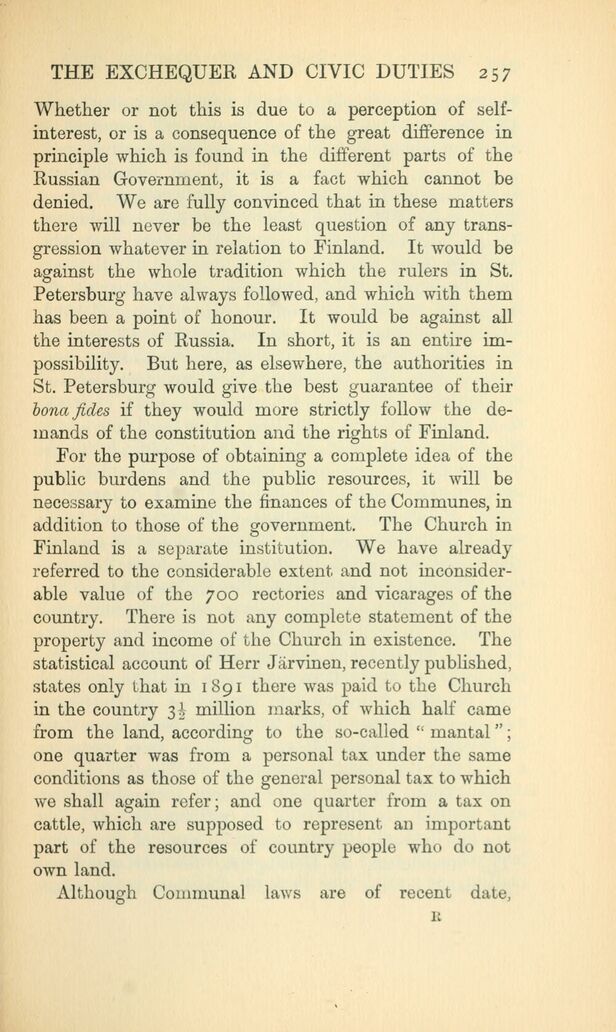
Full resolution (JPEG) - On this page / på denna sida - X. The Exchequer and Civic Duties

<< prev. page << föreg. sida << >> nästa sida >> next page >>
Below is the raw OCR text
from the above scanned image.
Do you see an error? Proofread the page now!
Här nedan syns maskintolkade texten från faksimilbilden ovan.
Ser du något fel? Korrekturläs sidan nu!
This page has been proofread at least once.
(diff)
(history)
Denna sida har korrekturlästs minst en gång.
(skillnad)
(historik)
Whether or not this is due to a perception of
self-interest, or is a consequence of the great difference in
principle which is found in the different parts of the
Russian Government, it is a fact which cannot be
denied. We are fully convinced that in these matters
there will never be the least question of any
transgression whatever in relation to Finland. It would be
against the whole tradition which the rulers in St.
Petersburg have always followed, and which with them
has been a point of honour. It would be against all
the interests of Russia. In short, it is an entire
impossibility. But here, as elsewhere, the authorities in
St. Petersburg would give the best guarantee of their
bona fides if they would more strictly follow the
demands of the constitution and the rights of Finland.
For the purpose of obtaining a complete idea of the
public burdens and the public resources, it will be
necessary to examine the finances of the Communes, in
addition to those of the government. The Church in
Finland is a separate institution. We have already
referred to the considerable extent and not inconsiderable
value of the 700 rectories and vicarages of the
country. There is not any complete statement of the
property and income of the Church in existence. The
statistical account of Herr Järvinen, recently published,
states only that in 1891 there was paid to the Church
in the country 3½ million marks, of which half came
from the land, according to the so-called “mantal”;
one quarter was from a personal tax under the same
conditions as those of the general personal tax to which
we shall again refer; and one quarter from a tax on
cattle, which are supposed to represent an important
part of the resources of country people who do not
own land.
Although Communal laws are of recent date,
<< prev. page << föreg. sida << >> nästa sida >> next page >>